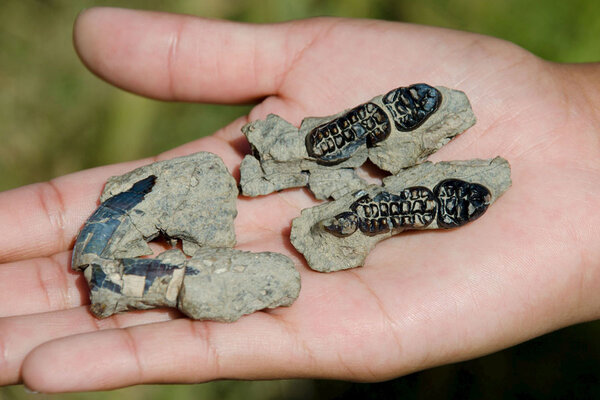Guess what they just found out took over the planet after all those lizardy dinosaurs were wiped by the comet? OF COURSE YOU KNOW THE ANSWER.

Kimbetopsalis Simmonsae was a plant-eating mammal that exploded into the void created by the now extinct lizards. Weighing at a hefty 50 lbs and taking advantage of all the lush vegetation. Although it has no direct descendents, is success made room for the descent line of every mammal alive today.
Including us.

Recognize this plant-eating tooth structure? Molars in the back and incisors in the front? The fossil was found in New Mexico, the site of the dinosaur-hitting crater. Because these pre-beavers wasted NO time.

It’s literally all over the news this morning, how beaver-like creatures took over after the lizards and made a new race of mammals, but here’s a science-based report from Phys.org sent by BK from Georgia.
How we found the ‘prehistoric beaver’ that helped mammals inherit Earth after dinosaurs were wiped out
Sixty six million years ago the world changed in an instant. A huge asteroid, some ten kilometers in diameter, smashed into what is now Mexico. It arrived with the force of several million nuclear bombs, and unleashed a deadly cocktail of wildfires, tsunamis, earthquakes, and volcanoes.
It wasn’t a good time to be alive. Scientists estimate that about 75% of all species became extinct, most famously among them the dinosaurs. But some of our furry ancestors managed to make it through the apocalypse. With T. rex and Triceratops now out of the picture, gutsy little mammals had a new world to colonize.
A new fossil from New Mexico is helping us better understand how mammals took advantage of the dinosaur extinction to become the incredibly successful creatures that we know today. It was discovered and studied by a team of researchers that I am part of, led by Thomas Williamson of the New Mexico Museum of Natural History and Science.
Despite appearances, Kimbetopsalis was no beaver (which is a type of rodent). It was a member of a completely extinct group of mammals called multituberculates, which originated alongside the dinosaurs, survived the extinction, diversified afterwards, and ultimately went extinct 35 million years ago when they were superseded by the smarter, faster-growing modern rodents.
Kimbetopsalis is testament to how the history of life hinges on moments that can reset the course of evolution. T. rex and kin had ruled the Earth for over 100 million years. Then suddenly the world was thrown into chaos by rapid environmental change. Dinosaurs couldn’t cope and all of a sudden they were gone. Their size and strength couldn’t save them. Mammals fared better, and now one species of brainy ape occupies that dominant place in nature that was once held by the dinosaurs.
Opportunity Seized, Change Created, Evolving Conditions Utilized
. Scientists were stunned this this adaption could have taken place so quickly. But I’m not stunned. Sounds like a beaver to me, don’t you think?
This seems like a great time to repost the obvious.






































